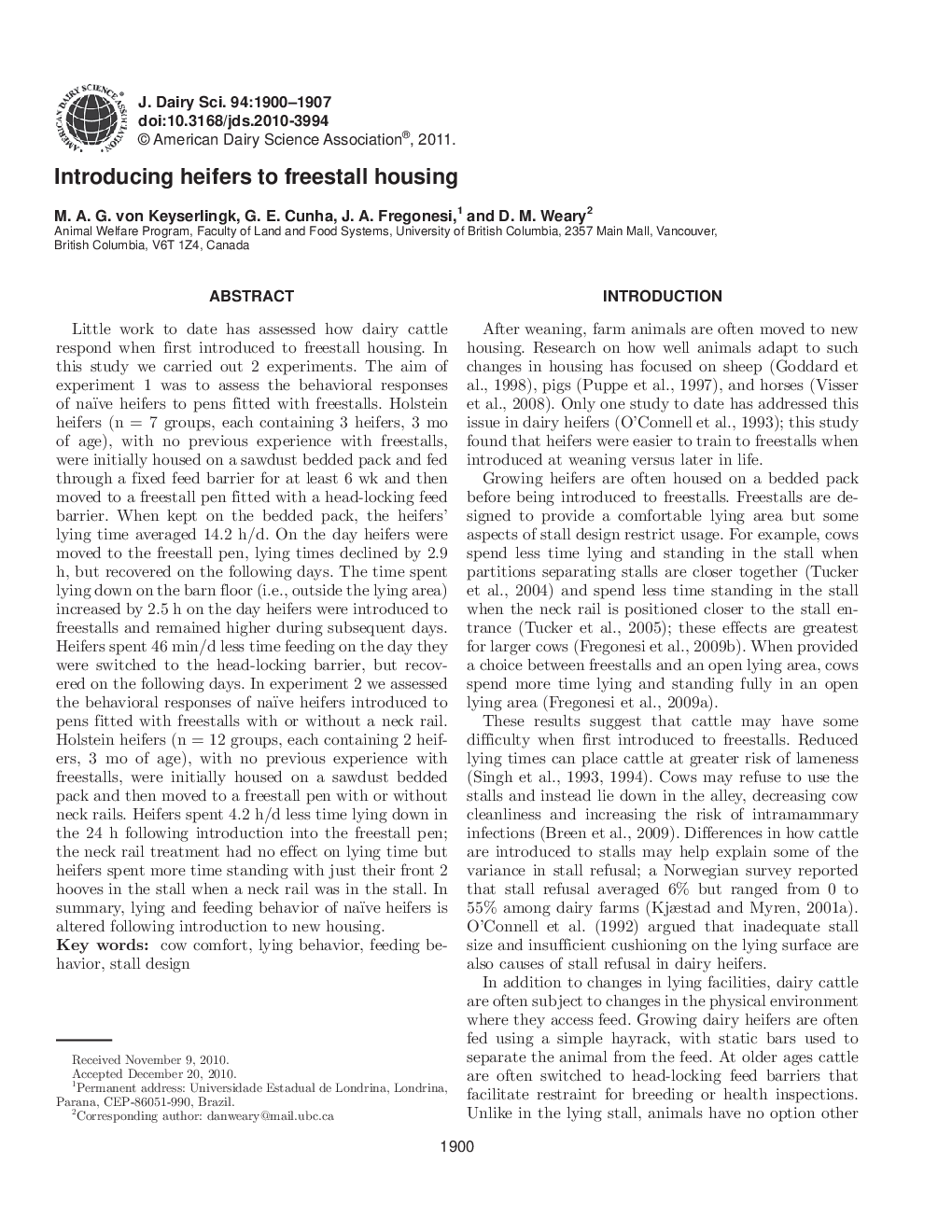| Article ID | Journal | Published Year | Pages | File Type |
|---|---|---|---|---|
| 10982119 | Journal of Dairy Science | 2011 | 8 Pages |
Abstract
Little work to date has assessed how dairy cattle respond when first introduced to freestall housing. In this study we carried out 2 experiments. The aim of experiment 1 was to assess the behavioral responses of naïve heifers to pens fitted with freestalls. Holstein heifers (n = 7 groups, each containing 3 heifers, 3 mo of age), with no previous experience with freestalls, were initially housed on a sawdust bedded pack and fed through a fixed feed barrier for at least 6 wk and then moved to a freestall pen fitted with a head-locking feed barrier. When kept on the bedded pack, the heifers' lying time averaged 14.2 h/d. On the day heifers were moved to the freestall pen, lying times declined by 2.9 h, but recovered on the following days. The time spent lying down on the barn floor (i.e., outside the lying area) increased by 2.5 h on the day heifers were introduced to freestalls and remained higher during subsequent days. Heifers spent 46 min/d less time feeding on the day they were switched to the head-locking barrier, but recovered on the following days. In experiment 2 we assessed the behavioral responses of naïve heifers introduced to pens fitted with freestalls with or without a neck rail. Holstein heifers (n = 12 groups, each containing 2 heifers, 3 mo of age), with no previous experience with freestalls, were initially housed on a sawdust bedded pack and then moved to a freestall pen with or without neck rails. Heifers spent 4.2 h/d less time lying down in the 24 h following introduction into the freestall pen; the neck rail treatment had no effect on lying time but heifers spent more time standing with just their front 2 hooves in the stall when a neck rail was in the stall. In summary, lying and feeding behavior of naïve heifers is altered following introduction to new housing.
Related Topics
Life Sciences
Agricultural and Biological Sciences
Animal Science and Zoology
Authors
M.A.G. von Keyserlingk, G.E. Cunha, J.A. Fregonesi, D.M. Weary,
